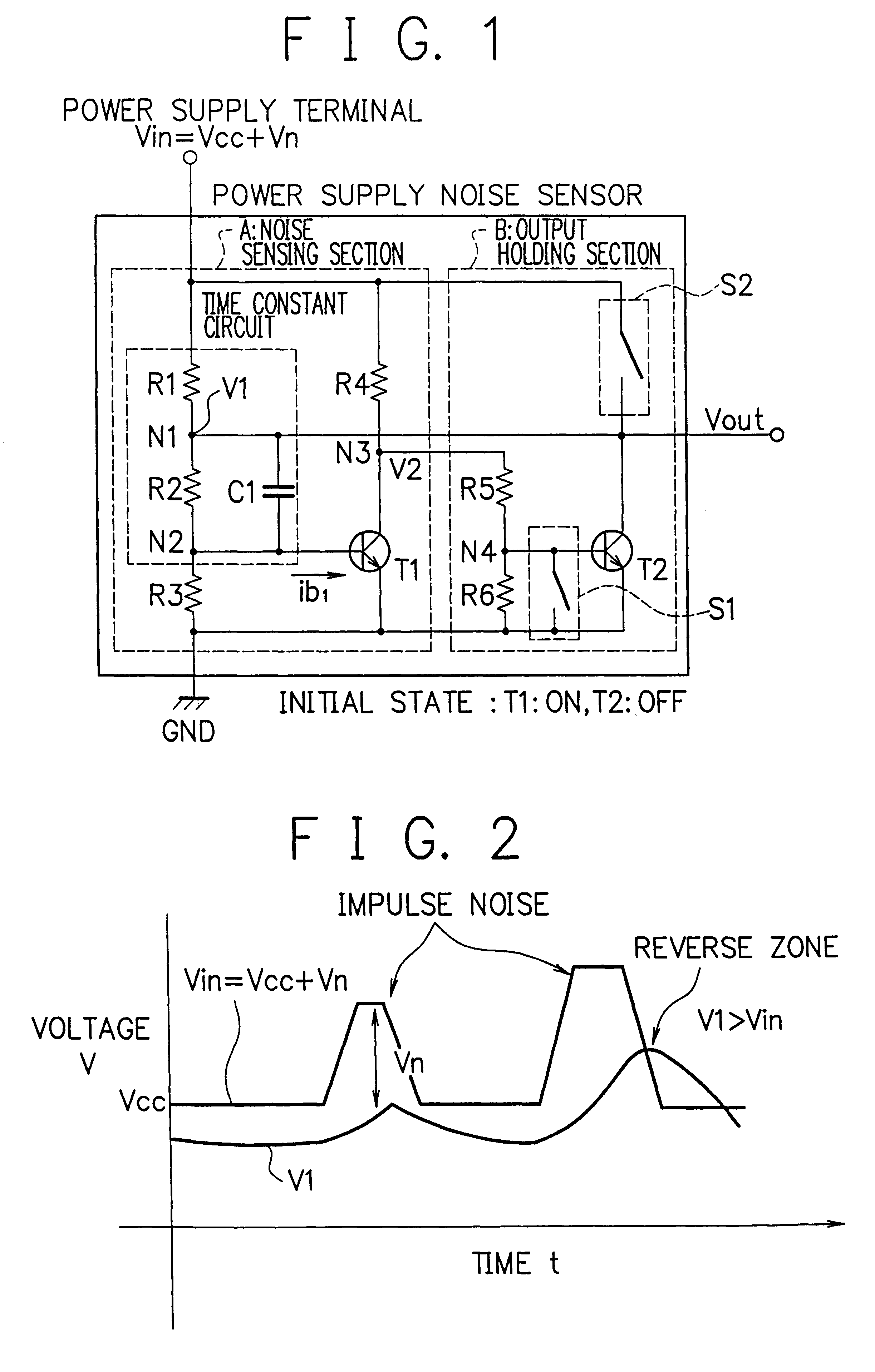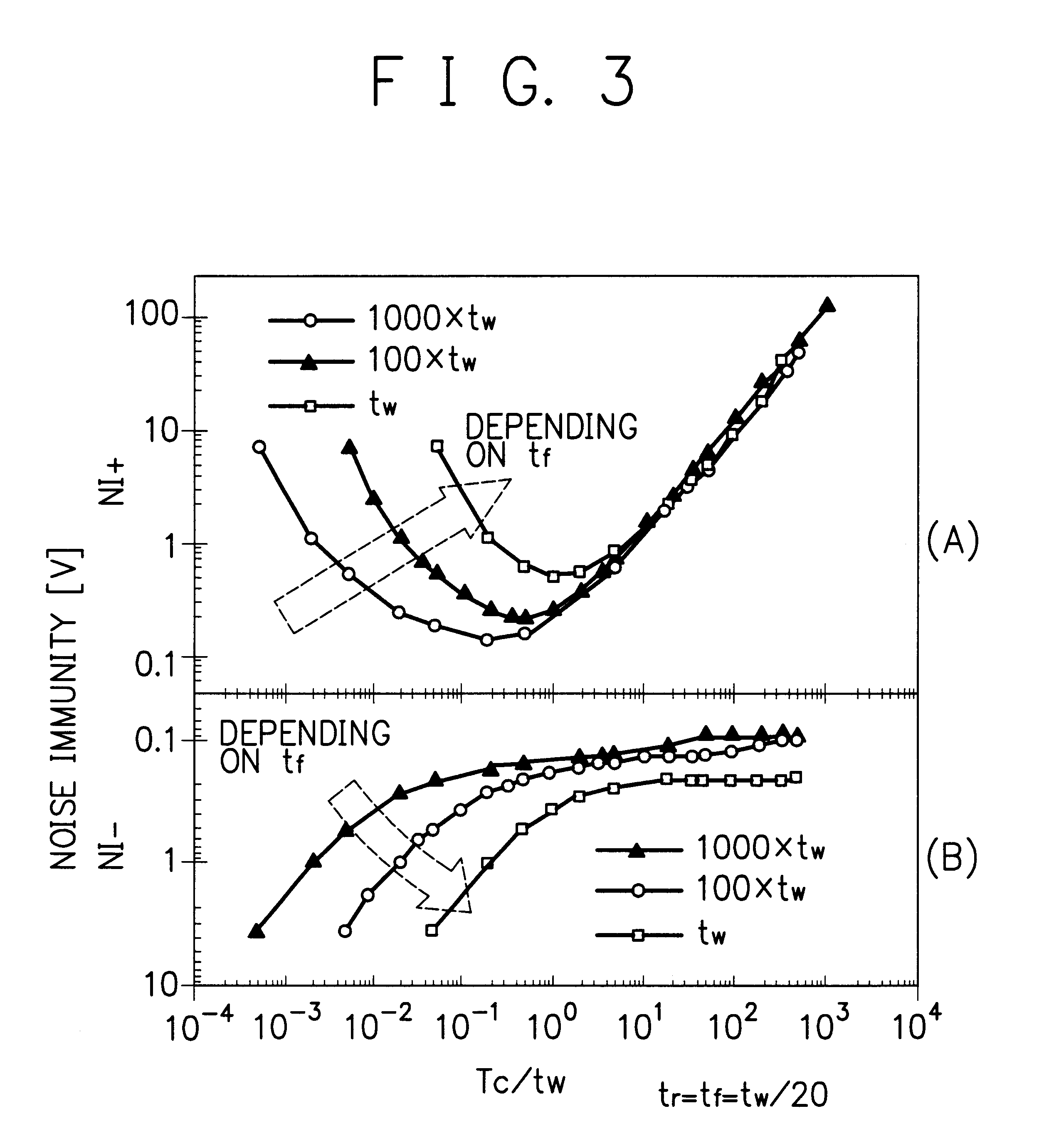Power supply noise sensor
a technology of power supply and noise sensor, applied in the direction of electric variable regulation, process and machine control, instruments, etc., can solve the problems of inability to forecast, most erroneous operation of digital systems, and damage to the digital circui
- Summary
- Abstract
- Description
- Claims
- Application Information
AI Technical Summary
Benefits of technology
Problems solved by technology
Method used
Image
Examples
Embodiment Construction
Referring next to the accompanying drawings, description will be given of an embodiment in accordance with the present invention. As can be seen from FIG. 1, the power supply noise sensor includes a noise sensing section A to sense impulse noise applied to a power supply line of the sensor and an output holding section B to hold an output which is a signal sensed by the noise sensing section A. The section A has an aspect that its time constant circuit dominates a transient response of a base current of a transistor in association with a power supply noise. That is, the time constant circuit includes a resistor R1 as a first resistor disposed between a power supply terminal of a power supply voltage Vcc and a node N1 and a parallel circuit including a resistor R2 as a second resistor arranged between the node N1 and a node N2 and a capacitor C1. The power supply noise sensor includes a transistor T1 having a base, a collector, and an emitter. The node N2 of the time constant circuit...
PUM
 Login to View More
Login to View More Abstract
Description
Claims
Application Information
 Login to View More
Login to View More - R&D
- Intellectual Property
- Life Sciences
- Materials
- Tech Scout
- Unparalleled Data Quality
- Higher Quality Content
- 60% Fewer Hallucinations
Browse by: Latest US Patents, China's latest patents, Technical Efficacy Thesaurus, Application Domain, Technology Topic, Popular Technical Reports.
© 2025 PatSnap. All rights reserved.Legal|Privacy policy|Modern Slavery Act Transparency Statement|Sitemap|About US| Contact US: help@patsnap.com



